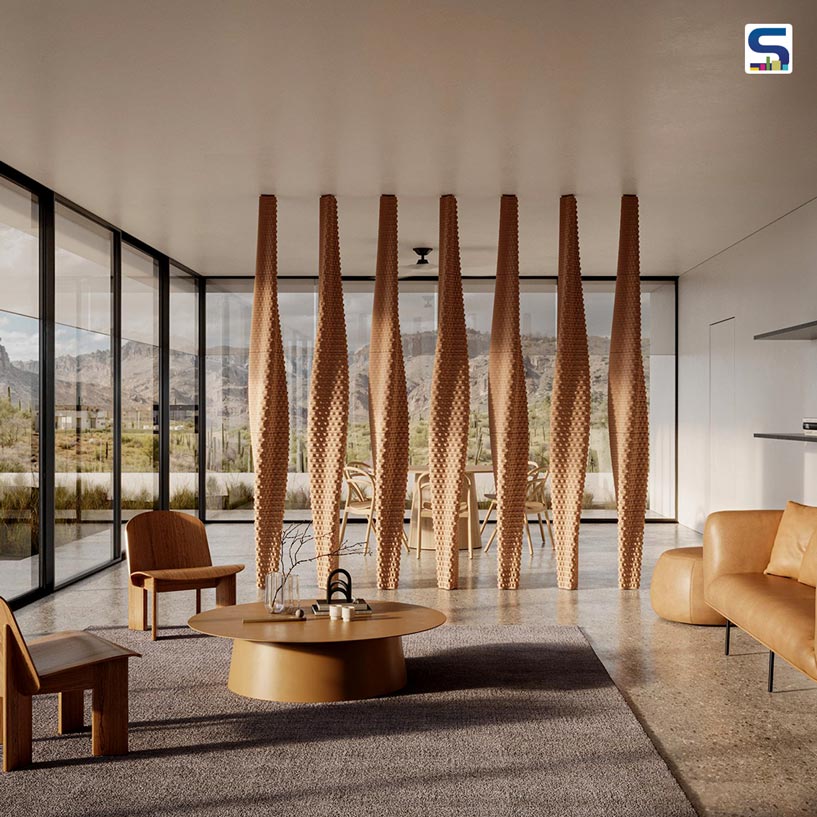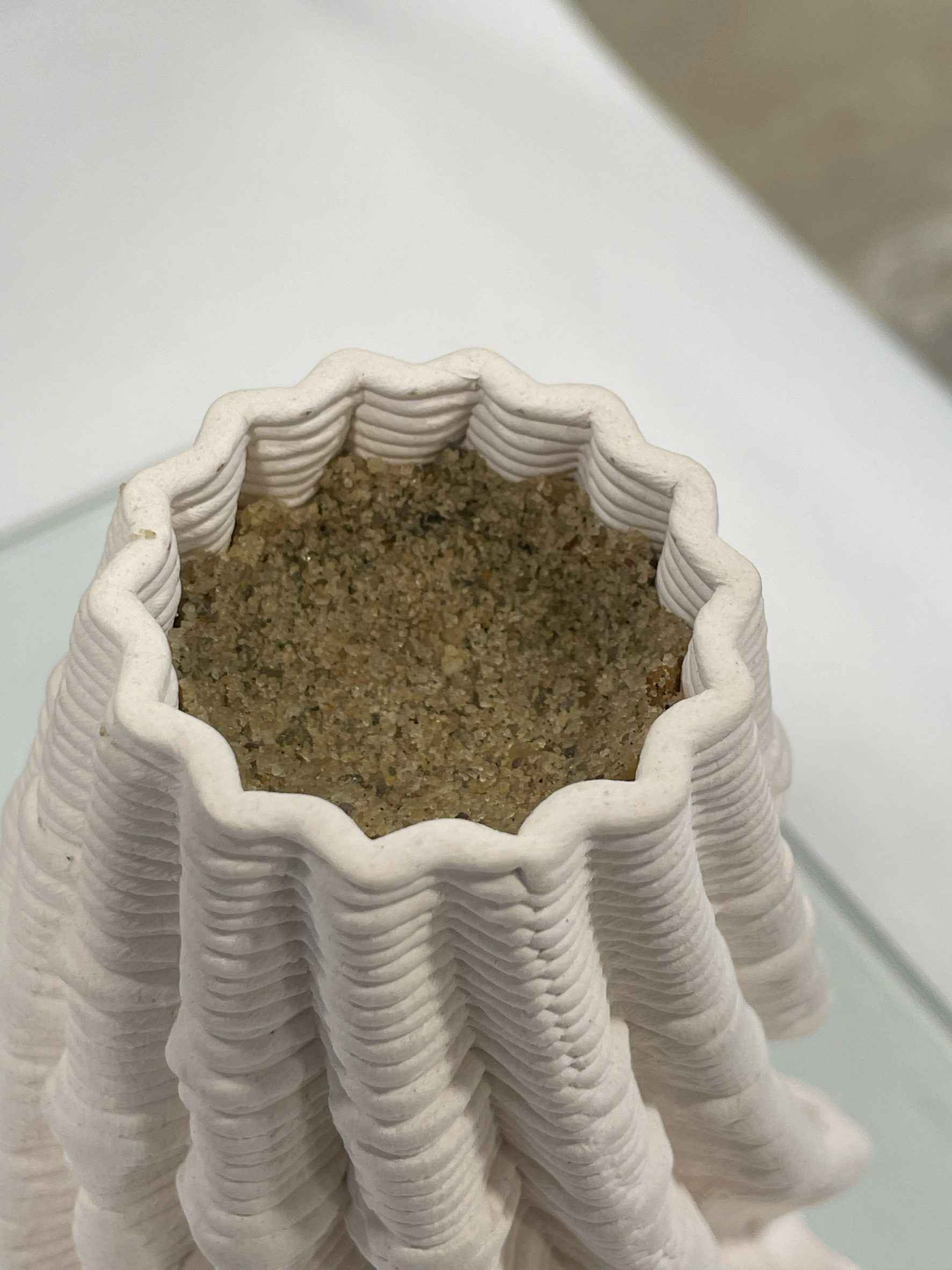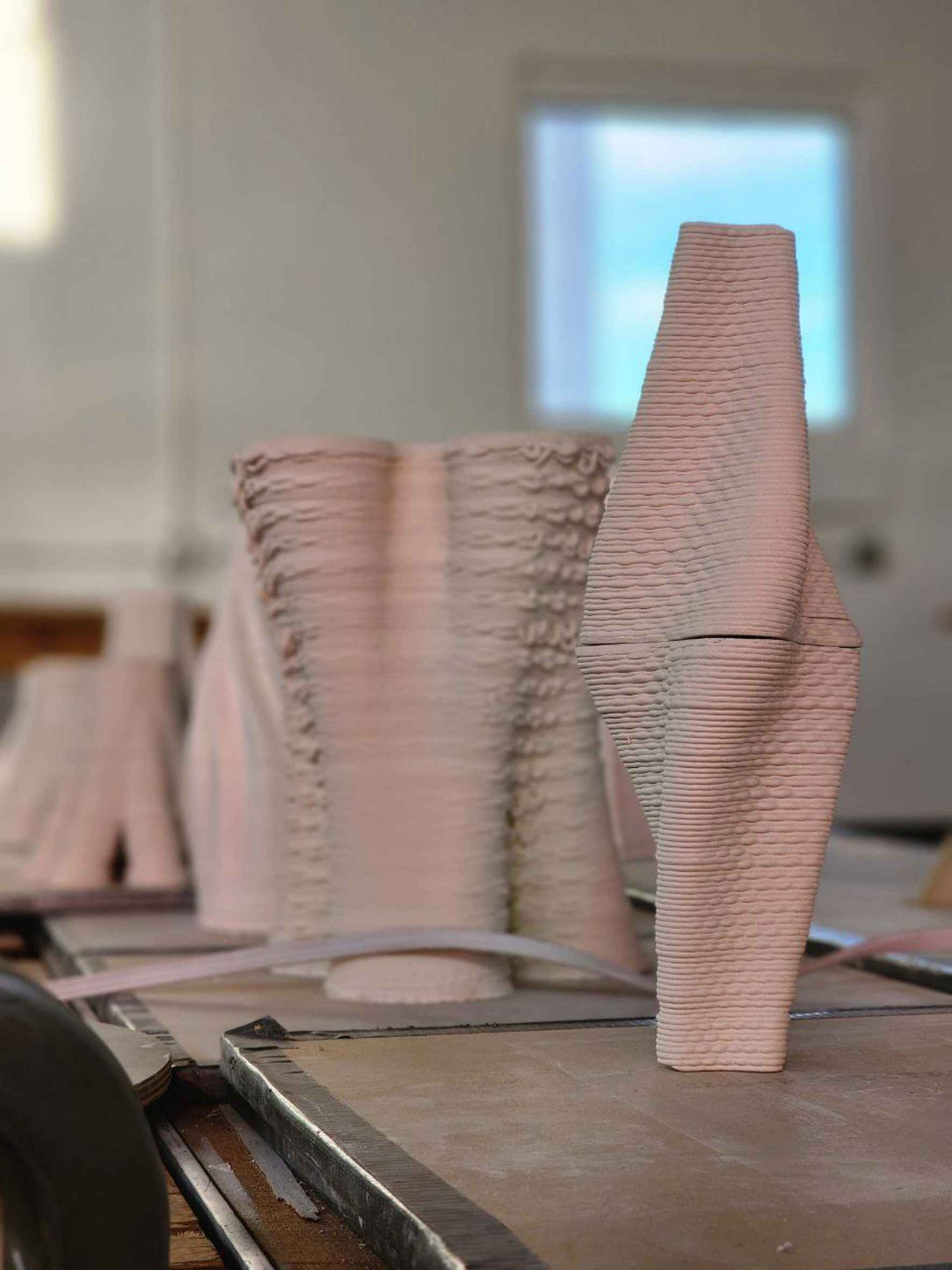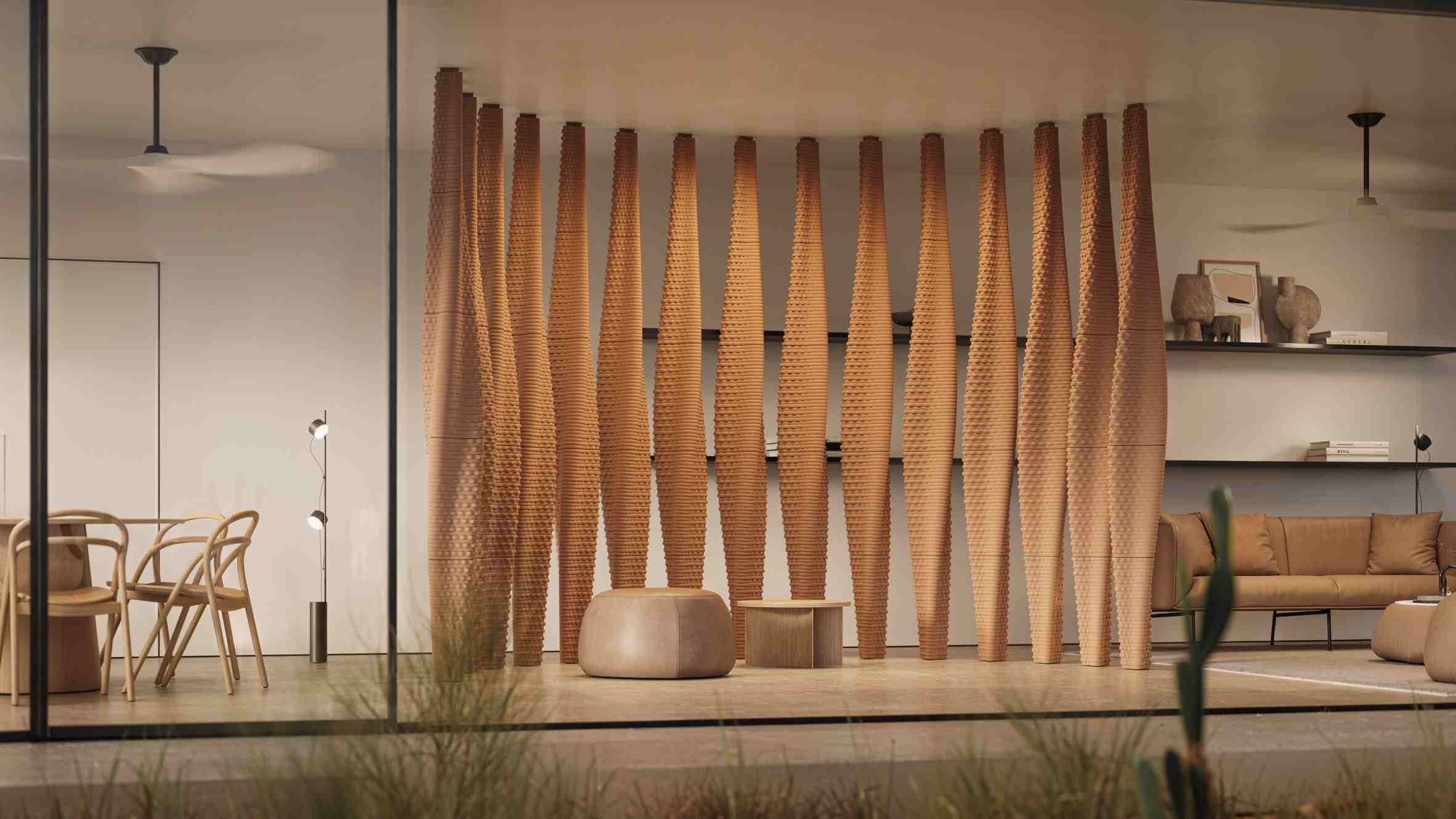
As global temperatures continue to rise and the demand for energy-intensive cooling systems grows, researchers at Virginia Tech have turned to ancient wisdom to reimagine the future of climate control. A team of architects, designers, and engineers at the university has developed an innovative 3D-printed evaporative cooling system that could offer a sustainable alternative to conventional air conditioning. Know on SURFACES REPORTER (SR) how Virginia Tech’s clay cooling columns join the movement of sustainable living by blending ancient passive cooling wisdom with 21st-century technology.

A team of architects, designers, and engineers at the university has developed an innovative 3D-printed evaporative cooling system that could offer a sustainable alternative to conventional air conditioning.
Reinventing ancient wisdom
The system is made up of hollow clay columns that can be filled with sand and water. When warm air passes through the structure, the water in the sand evaporates, cooling the surrounding air. This simple yet powerful principle has been known for thousands of years, but Virginia Tech’s team is giving it a fresh, technologically advanced form. According to their research, the setup can reduce surrounding temperatures by as much as 10 degrees Fahrenheit (5.56 degrees Celsius).
Currently designed as a wall partition, the cooling system is reportedly undergoing performance testing. However, its modular nature means it can be adapted into other applications. For instance, the researchers envision furniture pieces such as a cooling chair that could create localized comfort zones. The concept could even be scaled into building facades, similar to breeze blocks, transforming walls into passive cooling devices that interact with the environment. The project has been spearheaded by Stefan Al, an architect, urban designer, and affiliate associate professor of architecture at Virginia Tech. Collaborating with Brook Kennedy, an industrial designer known for his 2019 creation of the Fog Harp, a passive water-harvesting device and building science professor Georg Reichard, Al sought to merge ancient evaporative cooling methods with cutting-edge 3D printing technologies.

Currently designed as a wall partition, the cooling system is reportedly undergoing performance testing.
Cooling without AC
According to Al, the innovation is a modern hybrid of two traditional systems, namely, the muscatese, an Omani window design that uses evaporation to cool air, and the zeer pot, an ancient clay vessel used for refrigeration by placing one pot inside another with wet sand in between. Both rely on the same natural principle of as water evaporates, it absorbs heat, lowering temperatures. This principle has been applied for millennia. Ancient Egyptians combined wind catchers with evaporative systems, while in the Middle East, clay jars filled with water were placed near latticed windows to create naturally cooled interiors. Despite their effectiveness, these approaches were largely abandoned in the West with the rise of mechanical air conditioning in the 20th century. Al and his team believe it’s time to revisit these ideas with the help of modern technology and sustainable design.
Buildings today account for over 30 per cent of global energy use and roughly a quarter of greenhouse gas emissions, with heating and cooling being some of the biggest culprits. By contrast, clay has a lower embodied carbon footprint than cement, and its natural ability to absorb and release heat makes it ideal for passive temperature regulation. The use of 3D printing also enables designers to experiment with different geometries, textures and levels of porosity, which directly affect how well the system cools.

The innovation is a modern hybrid of two traditional systems, namely, the muscatese, an Omani window design that uses evaporation to cool air, and the zeer pot, an ancient clay vessel used for refrigeration by placing one pot inside another with wet sand in between.
Sustainable comfort
So far, the team, which includes Saeed Sakhdari, Ilan Farahi, and Mohammed Ali, has produced three prototypes in cylindrical forms. Each has been tested for thermal performance using infrared imaging. Findings show that factors such as column geometry, surface texture and material porosity play a crucial role in maximizing evaporation without compromising the strength of the clay. There are, however, limitations. The size of Virginia Tech’s kiln currently restricts prototypes to objects no larger than a vase. Scaling the concept to full walls or entire rooms will require larger production facilities. Another challenge lies in air distribution because evaporative cooling is localized, and the effect is strongest near the clay structure. Al notes that pairing the system with a fan or placing it in naturally ventilated areas can significantly enhance performance.
Despite these hurdles, the system has exciting potential. Instead of being hidden away like conventional air conditioners, these clay structures could be aesthetic elements within a space, appreciated for both their form and function. Al believes such visible, beautiful designs can also help raise public awareness of sustainable alternatives to cooling.
Image credit: Virginia Tech